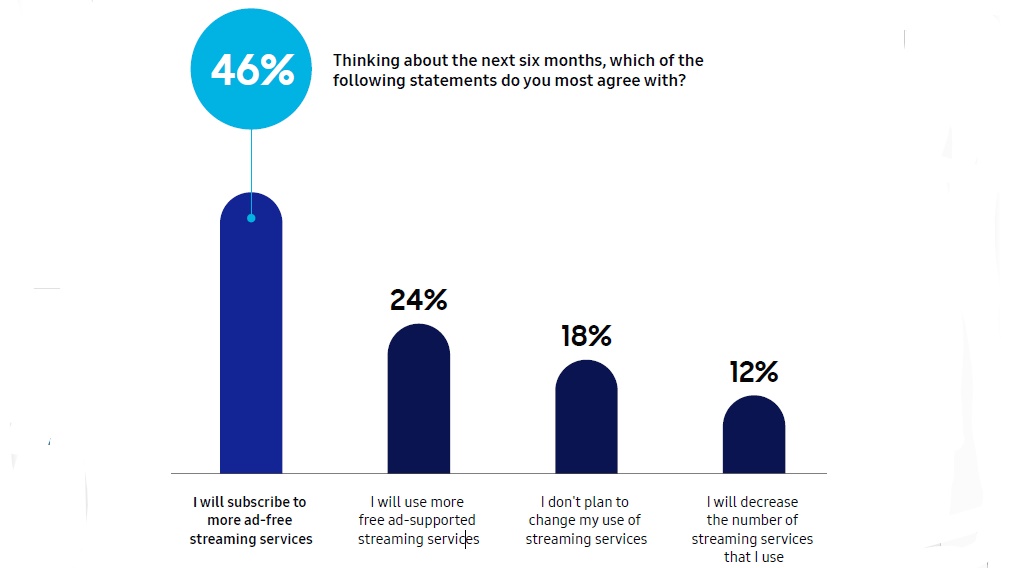Samsung Ads Index Gives Streamers Insights About Consumer Behavior
Lots of new signups, lots of churn expected

Samsung Ads, which gets data from 45 million smart TVs in the U.S., has launched the Streaming Index, which aims to provide streaming services with insights into consumer behavior.
The data comes from both viewing data received from Samsung devices as well as a survey of Samsung device users. Samsung Ads mostly used its data to sell targeted ads on its platform.
In a report, Behind The Screens, Samsung TV describes the competitive streaming business and urges would-be survivors of the streaming wars to use audience insights in order to acquire subscribers and retain them.
At this point the market is growing, with 88% of the respondents in Samsung’s survey saying they intend to use TV apps more or at the same level going forward, with only 12% saying they intend to cut back. Most of those adding subscribers want ad-free services (46%) compared to 24% planning to use more free ad supported streaming services.
Streaming audiences tend to be new and volatile. In any given month, 32% of TV app audiences are new to that app loyalty is hard to achieve, with churn rates at 50% and growing.
Streamers need more brand awareness than linear channels if only because most viewers use 3.8 apps per quarter compared to the 10 to 30 traditional TV channels those viewers use. App users value new and frequently updated content.
“The challenges in the streaming app market have never been more significant, yet there are still major opportunities across every tier of the ecosystem,” said Justin Evans, global head of analytics & insights, Samsung Ads. “TV app marketers have to work a lot harder than traditional broadcast companies to achieve consumer loyalty, and build brand awareness. It is critical to focus equally on retention and new customer acquisition to succeed in this competitive and evolving streaming landscape.”
The smarter way to stay on top of broadcasting and cable industry. Sign up below
The Samsung Ads report offers three suggestions to app marketers.
Zero in on the audiences that can be influenced. That includes understanding who your new and returning users are, what your churned users were doing before the left, understanding light vs media vs heavy users and studying the people who open an app once and dong repeat.
Set up target groups based on real data focused on key performance indicators.
Track the impact of your efforts over time and adjust tactics. ■
Jon has been business editor of Broadcasting+Cable since 2010. He focuses on revenue-generating activities, including advertising and distribution, as well as executive intrigue and merger and acquisition activity. Just about any story is fair game, if a dollar sign can make its way into the article. Before B+C, Jon covered the industry for TVWeek, Cable World, Electronic Media, Advertising Age and The New York Post. A native New Yorker, Jon is hiding in plain sight in the suburbs of Chicago.

